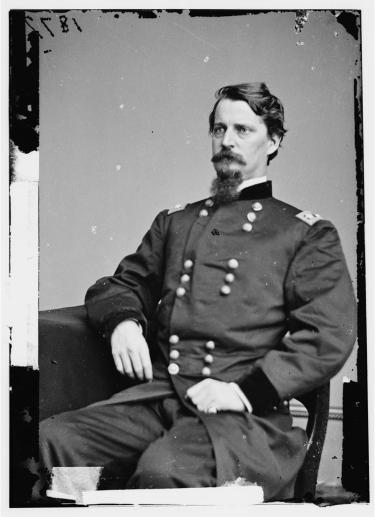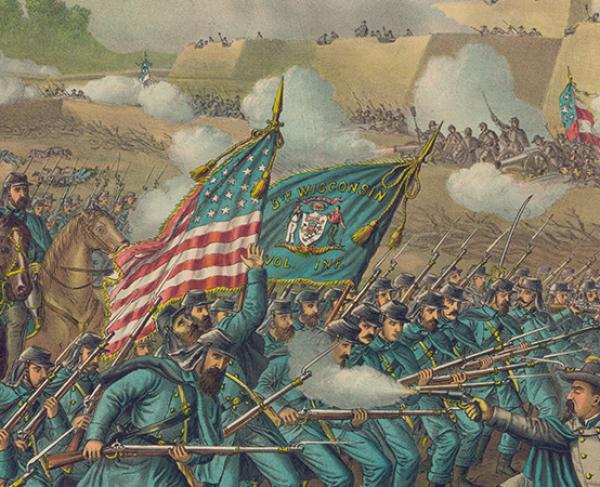Fundraising Drive To Finalize Protection Of 245-Acre Tract In The Heart of The Williamsburg Battlefield
Mary Koik, (202) 367-1861 ext. 7231
(Williamsburg, Va.) — Preservationists are in the final phase of efforts to protect the James Custis Farm, a 245-acre property at the heart of the Williamsburg Battlefield with centuries of history. Among the many events that played out on the land across centuries are important stories of self-emancipation against the backdrop of the Civil War’s early campaigns. The approximately $9.4 million inclusive cost makes the project the second most expensive private battlefield acquisition in American history. Thanks to an exceptional confluence of grant funding from the National Park Service, the Commonwealth of Virginia and the Department of Defense, the American Battlefield Trust is seeking only $57,000 in gifts from individual donors.
“The sheer number of categories in which this project is ‘one for the record books’ is astounding,” said Trust President David Duncan. “Not only was it awarded the largest matching grant in the history of the federal American Battlefield Protection Program (ABPP), but it also includes one of the most staggering matching opportunities ever offered to our members — a monumental $163-to-$1 return on donations. I am thrilled that the determination and persistence of the preservation community is finally coming to fruition.”

The private fundraising goal of $57,000 set by the Trust represents the remaining need after subtracting all grants and other sources from the total purchase price. Despite the shortfall, the Trust was able to acquire the land in the waning days of 2021 and work with the Virginia Department of Historic Resources and the United States Navy to facilitate permanent conservation easements. The current campaign is the final step before full victory can be declared on the project. Further details about the fundraising effort are available at www.battlefields.org/save245.
“The James Custis Farm is the heart of this battlefield, and its protection is a major milestone that is poised to help us tell important stories like never before,” said Drew Gruber, president of the Williamsburg Battlefield Association, which has advocated for protection of the farm for more than a decade. “It is destined to become another incredible resource, drawing more visitors to the area and boosting economic vibrancy in our community.”
The property’s history dates to the 1690s, when it was originally known as “Fouace’s Quarter” after Stephen Fouace, a French Huguenot and one of the original trustees of the College of William and Mary. It later became associated with Carter’s Grove Plantation, and over centuries enslaved labor produced liquor, tobacco, wheat, wool, butter, cider, pork, veal, mutton and livestock on the property. Before the outbreak of the Civil War, James W. Custis, who served in the Virginia State Senate and House of Delegates, operated the site. Undiscovered archaeological resources, touching many aspects of life in early America, likely abound on the property.

It is also a battleground of national significance, where Union soldiers and enslaved Virginians turned the tide of the Battle of Williamsburg and helped build public support for emancipation. In 1861, Confederates built 14 major military earthworks as a second defensive line in the Peninsula, with No. 11 on the site. During the Peninsula Campaign in the spring of 1862, Union forces moved to threaten the Confederate capital of Richmond from the southeast, with the Battle of Williamsburg as the first pitched battle of this offensive. On the morning of May 5, 1862, members of the local enslaved population — who had likely been impressed into building the defensive works — notified the Union army that two redoubts, numbered 11 and 14, were unoccupied. Due to their guidance, Brig. Gen. Winfield Scott Hancock directed two batteries of artillery to these positions, outflanking the Confederate forces. Despite being temporarily pushed back by an attack that swept across this property, Hancock’s forces were able to reestablish their line around Redoubt 11, repulsing the Confederates and earning the commander his sobriquet “Hancock the Superb.” Following the battle, the Union army used the nearby Custis farm buildings as a field hospital.
According to the Civil War Fortifications Study Group, Redoubt 11, located on the James Custis Farm property, is one of the best-preserved redoubts from the early war period in Virginia. Moreover, according to historian Glenn David Brasher, whose The Peninsula Campaign & The Necessity of Emancipation received awards from the Center for Civil War Research and praise from the Journal of American History: “There are few battlefields more appropriate than Williamsburg for telling the story of the military roles that enslaved African Americans played even before the Emancipation Proclamation in saving the Union and freeing their people from bondage.”
Protection of the James Custis Farm was also facilitated through the involvement of many officials at the federal, state and local levels. In particular, Senators Tim Kaine (D-VA) and Mark Warner (D-VA), and Rep. Elaine Luria (D-VA), were instrumental advocates, as were State Senator Monty Mason (D-1st District) and Delegate Amanda Batten (R-96th District).
Although the city is synonymous with the colonial era, Williamsburg’s significance to American history extends well beyond the 18th century and this project marks the Trust’s third high-profile acquisition at the site. In December 2020, the organization declared victory on protection of a 29-acre tract at the Bloody Ravine, acquired from The Colonial Williamsburg Foundation with grants from ABPP and the Commonwealth of Virginia, plus donations from Trust members. In 2015, the organization accepted the donation of 65 acres adjacent to the James Custis Farm from Anheuser Busch.
The only more expensive project ever undertaken by the Trust, or any other private preservation group, was the 2006 acquisition of the Slaughter Pen Farm, the decisive action of the 1862 Battle of Fredericksburg. The Trust is presently raising funds to pay off the remaining balance of the loan that financed the purchase.
The American Battlefield Trust is dedicated to preserving America’s hallowed battlegrounds and educating the public about what happened there and why it matters today. The nonprofit, nonpartisan organization has protected more than 54,000 acres associated with the Revolutionary War, War of 1812 and Civil War. Learn more at www.battlefields.org.
###

